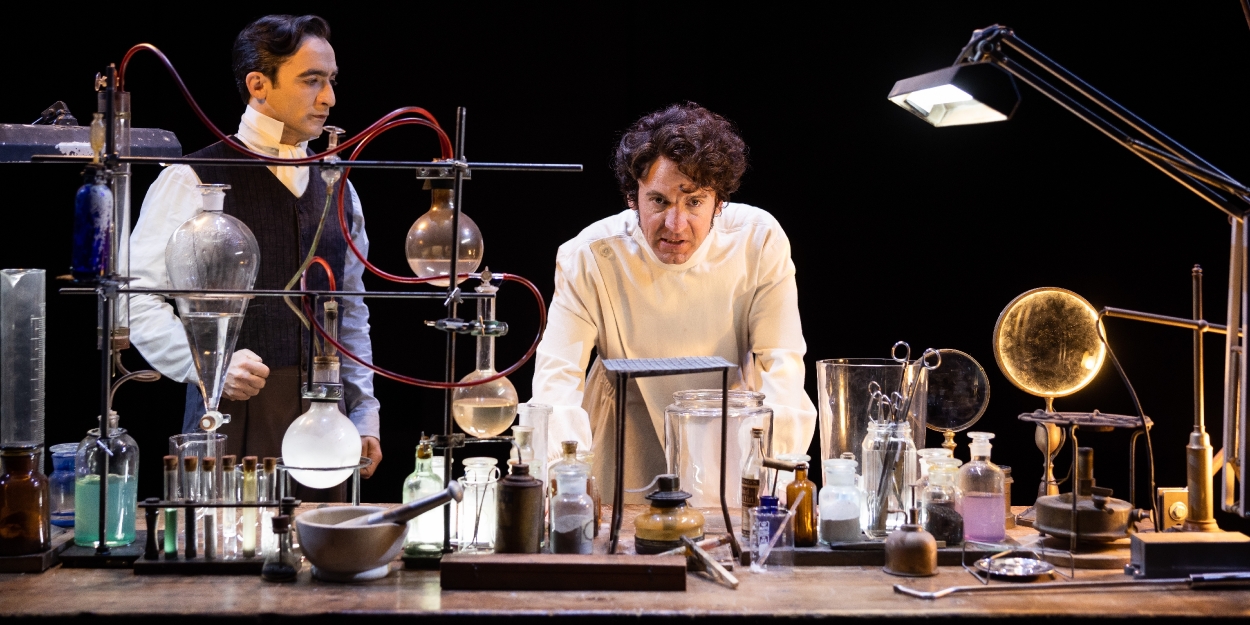Review: STRANGE CASE OF DR. JEKYLL AND MR. HYDE – ADELAIDE FESTIVAL 2023 at Her Majesty's Theatre, Adelaide Festival Centre
The Jekyll and Hyde dual nature of us all.

Reviewed by Ewart Shaw, Friday 3rd March 2023.
Have you ever watched a friend, a dear friend from childhood, degenerate under the influence of drugs or alcohol into a monster? Have you discovered the trusted teacher was a child abuser? This is the story that gave us the concept of the Jekyll and Hyde dual nature of us all.
Kip Williams's The Picture of Dorian Gray was a theatrical tour de force, a blend of live action and video, lush, sensual, and vividly coloured. His adaptation of the Strange Tale of Dr. Jekyll and Mr. Hyde, first published only a handful of years earlier, is almost unremittingly black and white. Both stories deal with the clash between the public face, charming and successful, and the private depraved and destructive inner nature. Both end with the death and exposure of the title character, in this case, both the title characters. In the story of Dorian Gray, there is a mysterious curse at work. In the Robert Louis Stevenson novel, Jekyll's destruction comes about through his scientific research. There is a potion, developed in his private laboratory.
Williams's adaptation of the text is assured. The long letters become speeches, remarks become conversations, and recollections are staged. Williams has created a blend of action and technology, theatre for the TV generation, perhaps, exploiting the possibilities of multiple camera angles, green screen sequences, and a chance to see the working of all the crew.
Without the actors, it's nothing.
Matthew Backer is the lawyer, Utterson. His narration is delivered with clarity, his bewilderment as the tale proceeds, entirely convincing. It's Ewen Leslie who astonishes with his versatility. He's the elegant Jekyll and grotesquely hunched Hyde. He's also the law clerk, and Lanyon, the old friend whose exposure to Jekyll's secret saps his life energy and sends him to an early death.
Williams has interpolated one event into the story. Jekyll persuades Utterson to join him as Hyde on a night on the town. A panel slides open and a glittering curtain is shown. The two men appear in can-can skirts and dance to the familiar Offenbach tune. Hyde disappears and Utterson is left standing, bewildered and skirted, front of stage.
It would have been the ideal tension breaker the play demanded except that there was a genuine medical emergency about fifty minutes in that stopped the show. The curtain was lowered and, eventually, the play continued with accustomed professionalism.
At the end, the two actors take their bows, accompanied by the thirteen, black-clad tech crew who have shared the stage with them. Their timing, their skill, was the secret to the success.
Photography, Daniel Boud.
Reader Reviews
Videos

